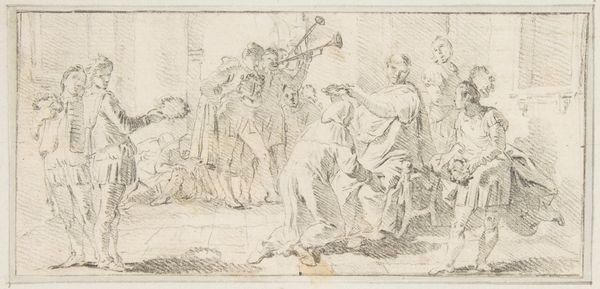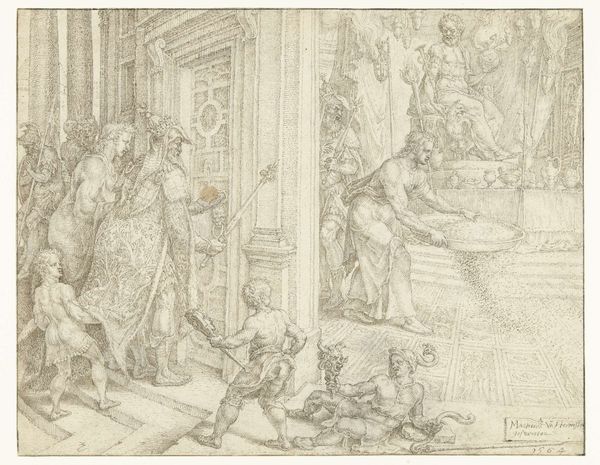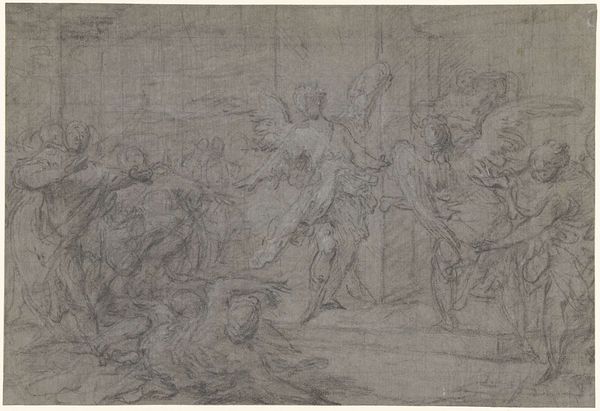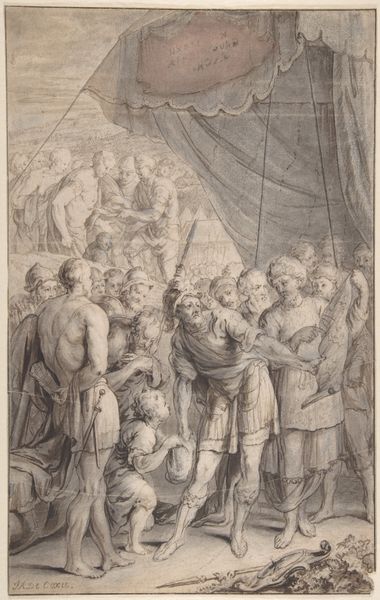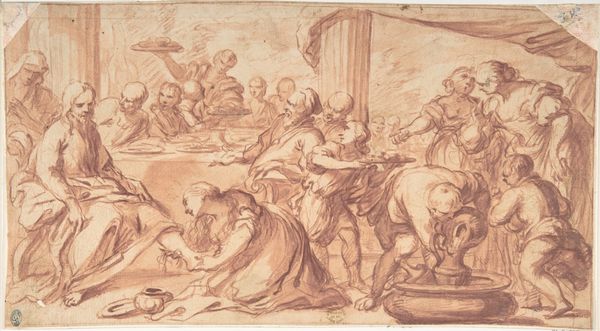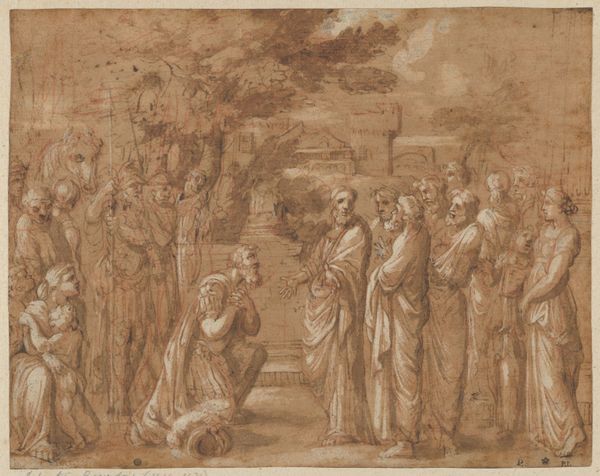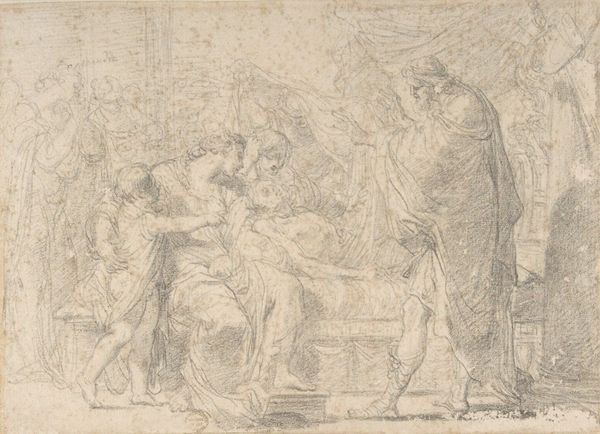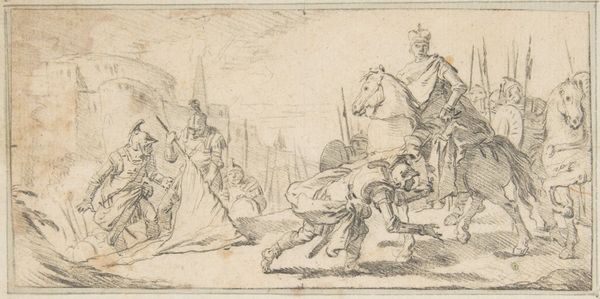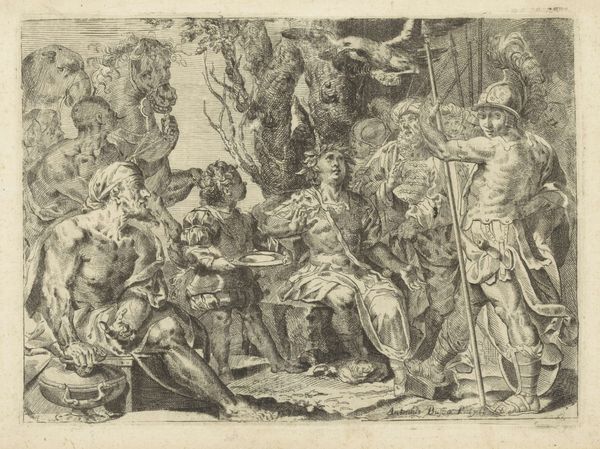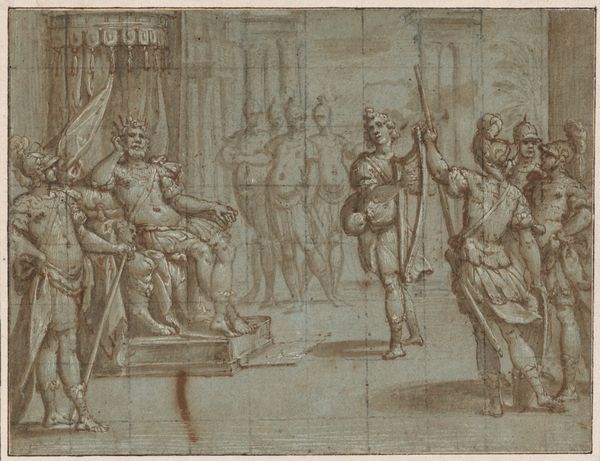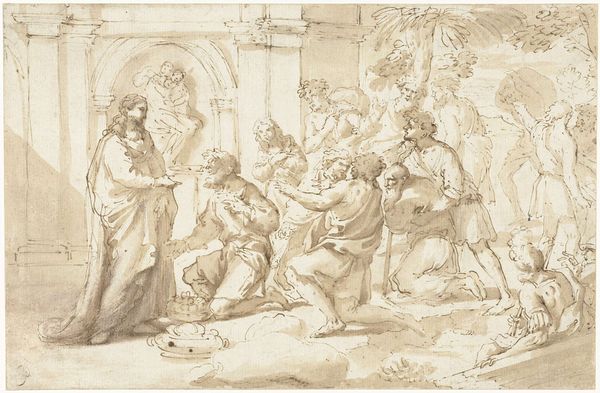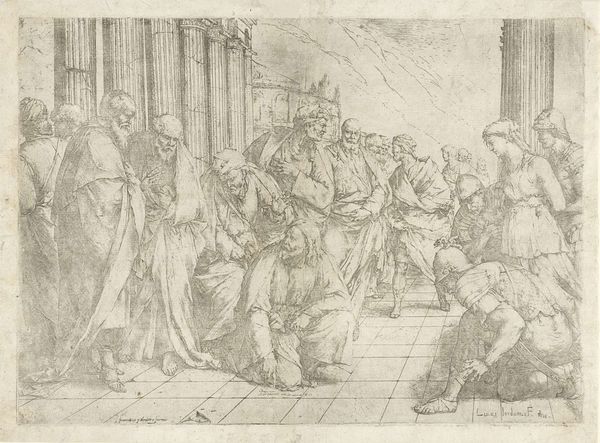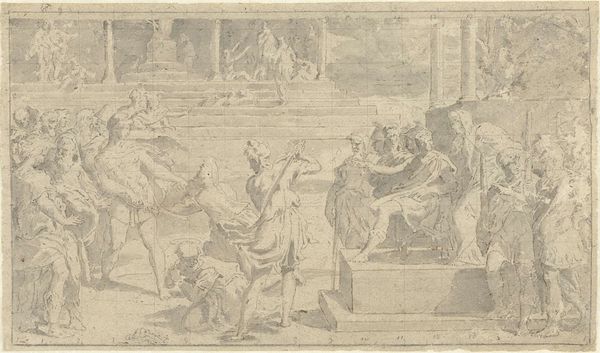
Nebukadnezar in verwondering over de aanwezigheid van vier jongelingen in de vurige oven 1564
maartenvanheemskerck
Rijksmuseum
print, engraving
narrative-art
figuration
11_renaissance
line
history-painting
northern-renaissance
engraving
Dimensions: height 198 mm, width 253 mm
Copyright: Rijks Museum: Open Domain
Curator: Welcome. This engraving, dating back to 1564, is titled "Nebukadnezar in verwondering over de aanwezigheid van vier jongelingen in de vurige oven" by Maarten van Heemskerck. It depicts the biblical story of Nebuchadnezzar and the fiery furnace. Editor: My first thought? A sense of contained chaos, masterfully rendered in meticulous detail. The line work is astonishing for conveying texture and depth within a single, unified scene. Curator: Indeed. Heemskerck's skillful use of line creates an almost tapestry-like density, emphasizing the dramatic tension of the scene. Look how he uses hatching and cross-hatching to delineate form and create subtle gradations of tone. Editor: And consider the means of production here. The act of engraving requires immense skill and patience, a dedicated hand to physically impress the design onto the copperplate, later transferred onto the page itself. How many prints like this were pulled? Each one carries the trace of this intense labor. Curator: Precisely. The linear style characteristic of Northern Renaissance engraving emphasizes clarity and detail, directing our eye across different zones of the narrative simultaneously. Editor: It's also a fascinating example of cultural exchange through material production. Printmaking allowed for the widespread dissemination of images and ideas, shaping perceptions of Biblical stories and figures. How did these depictions affect those viewing them across Europe, for example? What's their relationship to the raw materials, like copper? Curator: Consider how the artist frames the narrative with architecture – the oven and the idol establish Nebuchadnezzar’s hubris and subsequent humbling before divine intervention. These structural elements guide us through the progression of the story. Editor: Right. Nebuchadnezzar thought he had the power to demand this act and even that his idols would offer this degree of power, only to find he was challenging something far stronger. Looking closely, you sense not just a technical brilliance, but a social commentary too. The power of faith versus earthly authority. The relationship is clearly conveyed in this complex use of line. Curator: It's a testament to the expressive potential inherent within such a rigid and exacting medium. A perfect balance of form and content, line and light. Editor: Indeed, quite an accomplishment for the era, a fascinating insight into artmaking that is about to undergo monumental technological changes. The detail alone is incredible!
Comments
No comments
Be the first to comment and join the conversation on the ultimate creative platform.
